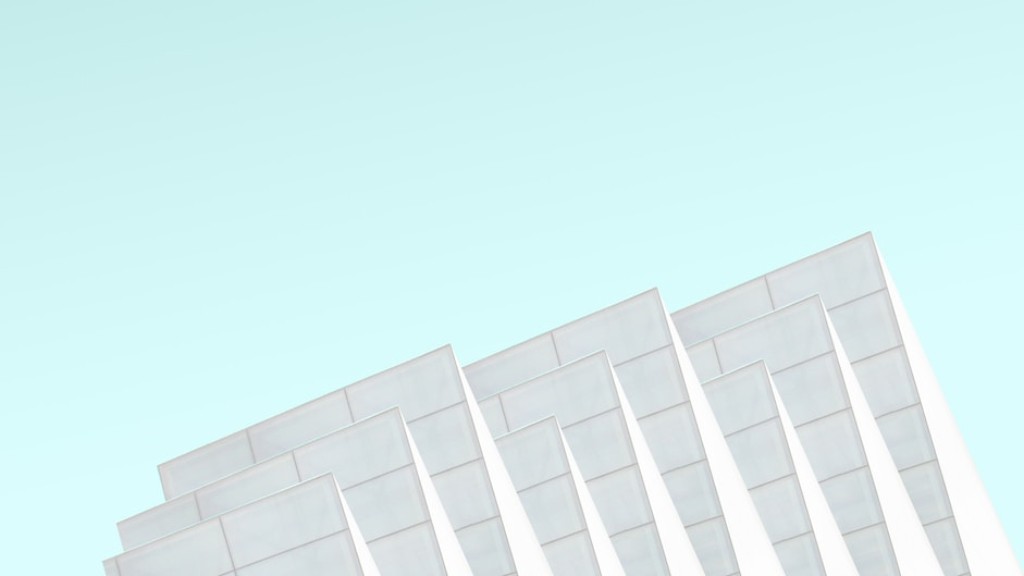Intrinsic Beauty or Monstrous Icons?
Modern architecture has always been a source of debate. While some argue it sums up beauty, modernism and innovation, others decry it as a visual abomination. But why do people hate modern architecture?
The main reason is that modern architecture diverges from traditional aesthetics, or, in other words, anything that isn’t a stacked collection of bricks, stones and mortar. While older types of architecture almost always follow classic design principles, modern architecture is a completely different style. It often combines unconventional, clean shapes with innovative materials and techniques which makes it a lot less traditional, and that can cause familiarity issues for some people.
Many also argue that modern architecture lacks an inherent emotive connection. The traditional aesthetic of ancient, baroque and gothic styles had been around for centuries and were deeply embedded in people’s lives. To put it simply, modern architecture can be a bit too foreign to be appreciated by people.
Moreover, many dislike modern architecture simply because of the way it looks. The visual contrast of modern architecture compared with traditional architecture can be too jarring for some people to handle, and it may look too edgy or sharp, inhuman and dominating, and far from comforting. When people try to imagine living inside such a structure, they usually perceive it as a hostile environment, and this can be off-putting.
Finally, modern architecture often goes hand-in-hand with gentrification, as developers and urban planners flock to demolish old buildings or repurpose them in order to make way for modern edifices, many of which lack any real soul. This sentiment of displacement is often a source of discontent for some who oppose modern architecture.
Negativity from the Media
The media has sometimes played a role in the perception of modern architecture. Unflattering depictions of modern structures can lead to people having a negative view on any phenomenon seen as progressive. Negative preconceptions get perpetuated if most of the literature people read tends to exploit modern architecture as negative or controversial.
Further, the media often portrays modern architecture as a symbol of wealth, mainly because such structures can be commissioned by the rich and powerful. This has resulted in a sense of isolation or alienation amongst those who cannot afford it or have no access to it, making them feel excluded.
Architectural Difficulty
The difficulty of understanding modern architecture can also be a factor why people dislike it. For example, most people’s favorite buildings are the typical brick and mortar ones characterized as cozy and expressive. On the other hand, modern architecture appears to be made up of random minimalist elements. It is true that modern architecture often requires some level of knowledge and understanding to truly appreciate it.
However, ignorance can lead to people having a natural distrust of something that’s different from their reality. People feel unable to relate to the principles and concepts of modern architecture, and so the common response is to reject it.
Economics Limitations
Unsurprisingly, the cost of modern architecture is often much higher than traditional architecture due to the materials and techniques used. This places modern architecture out of reach for many architects and developers, especially during times of financial hardship or market uncertainties.
Also, due to the economic limitations many people simply cannot afford to renovate a modern-style building, hence preferring to stay with what’s familiar and tangible. Lack of funds can also push the developer or property owner to go in a direction they prefer, and modern architecture may not fit in with the budget.
Environmental Factors
Many people also point out that modern architecture often conflicts with current environmental conditions and contexts. Renowned architect Ludwig Mies Van Der Rohe proclaimed the necessity for architecture to fit comfortably with its environment , and it’s true that modern might look out of place in certain natural settings.
Such architecture is often considered too artificial and out of balance with its environment — a modern home on quiet cobblestone street could appear to be a foreign object, as if it’s been unexpectedly teleported there.
Religious Stigmas
Some people also think that modern architecture disrupts the spiritual connection between humans and the divine. People have often looked to the skyline for guidance and spiritual connection, but modern architecture often fails to deliver this.
People see the dominant building designs of modern architecture as extremely artificial and rigid, which make them look out of place and not in harmony with the world. This connection should not be underestimated; while modern architecture can be praised on paper, many people simply do not feel its spiritual appeal, making them feel excluded and disconnected from the divine.
Controversial Models
Modern architecture often prompts varying opinions, even among experts in the same field. One controversial example is the Capital Gate skyscraper in Abu Dhabi by engineer Maan Al-Omar who became the first Arab engineer to win the title of engineer of the year from the Institution of Structural Engineers. This accordion-shaped modern edifice opened in 2010 and is often viewed as a symbol of progress for the region, although its design is unusual, using quirky angles and reflecting the sky which in some people’s opinion looks unnatural.
Evaluating the Pros and Cons
Whether you love or hate modern architecture, it all depends on your personal preference. Although it often faces criticism, modern architecture also offers interesting alternatives while being a testament to the intelligence and creativity of contemporary architects.
Ultimately, before declaring one’s dislike for modern architecture, it’s important to evaluate its pros and cons, both stylistically and economically. With the right material, engineering and construction techniques, modern architecture can be an ideal solution for those that can afford it, or simply an eye-catching icon for visitors to admire.
Clever Reinterpretations
Modern architecture does not always have to be hated. Clever reinterpretations such as non-prescriptive shapes, curves, multiple levels and color variations can go a long way towards creating balanced modern structures that the public can appreciate.
In some cases, modern architecture appears to be a combination of the traditional and the eccentric. This often succeeds in creating an interesting balance that people can easily relate to.
Aesthetically Pleasing Touches
Despite any existing controversy, modern architecture can be truly eye-catching when planned carefully. Making sure that certain elements are highlighted in the presence of traditional elements can bring both beauty and harmony.
Whether it is a combination of traditional siding with modern looking window frames or traditional arches used alongside modern overhangs, such tweaks can go a long way in softening its look and making it more accessible to the public.
Communal Compromise
Ultimately, modern architecture can be appreciated by a wider audience if they make it their goal to find common ground. Decades of either traditional or modern architecture could lead to an aesthetic dominance, but finding an acceptable middle ground is possible, and cleverly blending traditional styles with modern technology and innovation is a realistic goal.
On the flipside, modern architecture can represent a culture-shifting phenomenon for developing countries. Adapting old traditions to new realities is key for progress and modern architecture can be a vehicle to enact such changes without directly offending people’s traditional preferences. At the same time, such interesting pieces could become iconic landmarks and sources of pride that can save and strengthen people’s identities.


